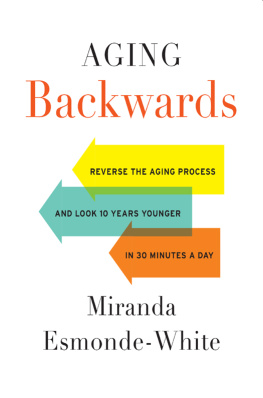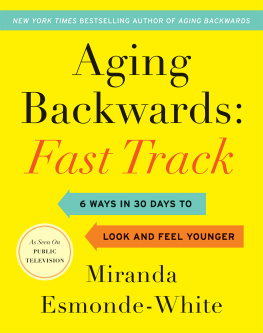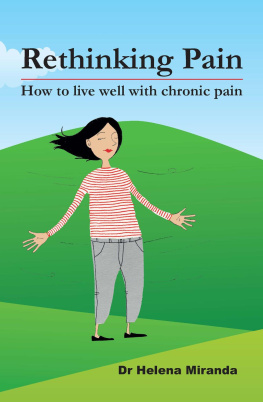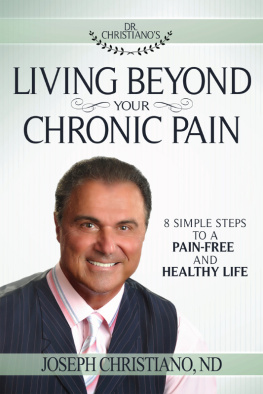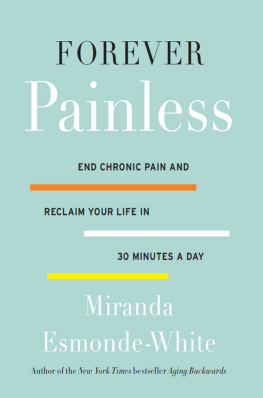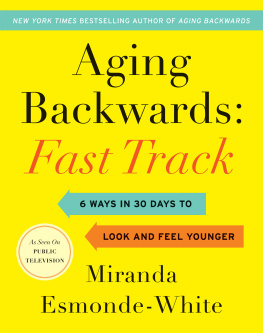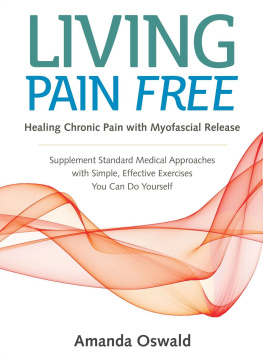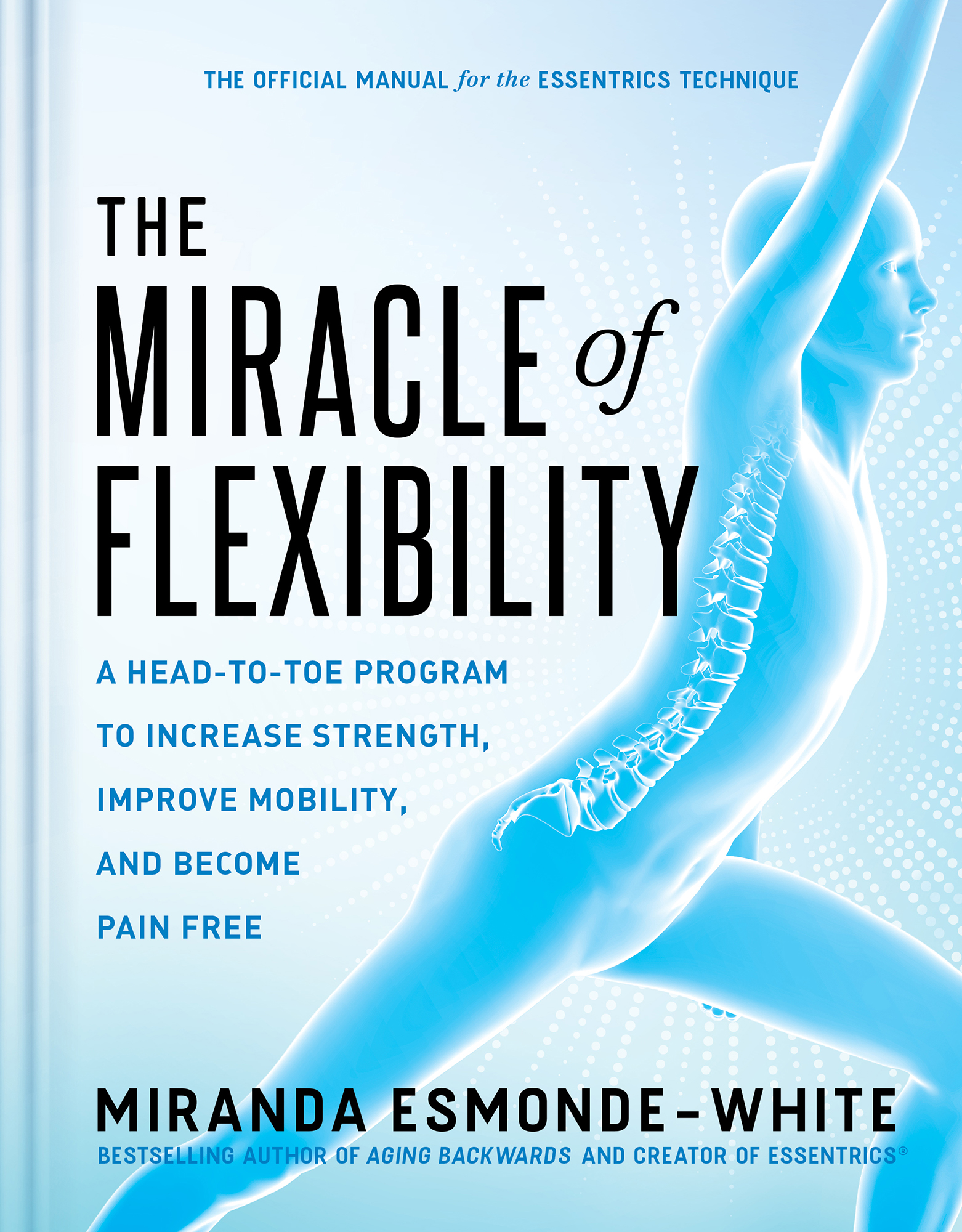Contents
Guide
The Official Manual for the Essentrics Technique
The Miracle of Flexibility
A Head-To-Toe Program to Increase Strength, Improve Mobility, and Become Pain Free
Miranda Esmonde-White
Bestselling Author of Aging Backwards and Creator of Essentrics
Praise for
Miranda Esmonde-White and Essentrics
Ive been doing Essentrics two to three times a week for the past twenty years to date. As an athlete, I used it to aid in recovery and to add speed and balance to my game. It allowed me to train harder and perform better.
Jonathon Power, World Squash Champion
Miranda combined scientific principles with intuition in creating Essentrics, a workout that rebalances the full musculoskeletal system using flexibility training to increase strength. Essentrics complements any fitness routine and offers huge potential for health promotion and disease prevention.
Emilia Zarco, chair of the Department of Health and Sport Sciences at Adelphi University
Ive been doing Essentrics for more than ten years. As a former dancer, I fell in love with the technique and how it made my body feel. Over the years Ive grown to appreciate what the technique does to calm my entire nervous system. Every morning on set I do a fifteen-to-forty-five-minute Essentrics warm-up in my trailer. It helps me tune into my body, align my posture, and tap into a mindful state.
Sarah Gadon, actor, Alias Grace and True Detective
I dedicate this book to the creator, with gratitude and awe for giving us the miracle of the human body.
INTRODUCTION What Is Essentrics?
I f youre reading this book, youre probably someone who loves to move, like meand who wants to keep moving for life.
Or youre someone who wishes you were moving more, who feels that the hours you spend immobilized over your phone or your laptop are harming your health, but who hasnt yet found a complete, full-body workout that you can fit into your day that leaves you feeling energized and pain-free.
Im about to tell you about a stretching and fitness revolution that will keep you moving, energized, and pain-free for life. It began with a simple insight: many exercise programs, including the ones I used to teach at my own studio, actually leave you with less mobility and restricted joints, which lead to premature aging and injury. Throwing out the idea of no pain, no gain, I spent years studying how were actually designed to move and creating a full-body program that stretches and strengthens all the muscles in a balanced way, enhances the range of motion of every joint, and unglues stuck connective tissue. The result is Essentrics, a groundbreaking practice of gentle movement, respecting the muscle chains and joint mobility of the body, that scientists from Harvard, Adelphi, and McGill Universities have validated as a way to keep us strong, flexible, and fit for life, as well as providing immense benefits for brain and digestive health.
From my own experience I know high-impact activities like running, team sports, and tennis are fun, social, take us out into the fresh air, and exercise our bodies. As exhilarating as these activities are, theyre also hard on us. Work, too, whether were sitting at a desk or constantly on our feet, creates wear and tear on our joints and muscles. We need to protect our bodies from permanent damage so we can live fulfilling, pain-free lives at any age.
We tend to reward men or women who display the strength and ability to keep going despite pain. Athletes, professional and amateur, push through pain and injury to finish marathons or triathlons, or to participate in sports like football, where the concussion and prescription drug use statistics are infamous. But we dont seem to learn the lesson that this kind of exercise prematurely ages the body; we just keep pushing ourselves to the breaking point. I danced with the National Ballet of Canada and know from personal experience that professional dancers ignore extreme pain and injuries up to the point at which their bodies can go no further.
Most fitness programs are designed to push young bodies to the limit; they are not designed to keep people injury- or pain-free. Quite the contrary: Pain is the gold standard for judging whether a workout is relevant. Over the years Ive seen many people drop gym memberships because their bodies cant handle the stress and pain. Ive seen people stop exercising altogether because of injuries that led to chronic pain and surgeries. Unfortunately, many people equate exercising to pain and a sense of personal failure, and they dont want to try again.
With Essentrics, Ive discovered a way to be fit without ending up in pain. Suffering from chronic pain and healing slowly are not inevitable, even as we live well into our eighties and even nineties and beyond; we want those years to be as much fun and full of activity as the first part of our lives. But if were in pain when were young, its unlikely that well be pain-free as we age. Im here to show you how you can and should be pain-free and fully active for all the years of your life.
Injuries are another thing that age us. The human body is designed to last well into our nineties without overuse injuries or joint damage. Some fitness experts say the body gets stronger when it heals after injury. My long experience and the thousands of people Ive worked with have shown me that this is not true: Injuries that occur in childhood and young adulthood often haunt peoples bodies throughout their entire lives. Injuries from repetitive strains or acute trauma often lead to increased risk of recurrent injuries or chronic pain if the source of the trauma is continuously reproduced.
This is the problem: Life, many workout regimens, and many sports involve repetitive, high-impact movements that unbalance the 206 bones, 650 muscles, 360 joints, and connective tissue (fascia) of the human body. When you unbalance the body, you will injure it.
In 2010 I was presenting a flexibility workshop at canfitpro, a major fitness convention in Toronto, Canada. I asked the two hundred participating coaches and fitness instructors to raise their hands if they were in pain. Ninety-six percent of the hands went up. If that many instructors were in pain, think of how their clients felt! Unfortunately, to this day in the fitness industry, some level of pain and injury are considered normal, acceptable, and even celebrated as evidence that youve worked hard. The pain, youre often told, is good pain, strengthening pain. For the record, there is no such thing as good pain. Pain is a neurological message telling us that something is wrong. Despite what some experts say, pushing through pain will not ultimately make you stronger. Yes, for a time, your muscles will get strongeruntil they start to break down.
Muscles make up one-third of the musculoskeletal system, which comprises three interdependent yet independent systems: the muscular system, the skeletal system, and connective tissue. Ignore one of these systems at your peril; this is when injury and pain occur. But when you work these systems as a trinity, pain and injury are rare. When your primary focus is strengthening muscles, you often stress the connective tissue that supports and protects those muscles, causing conditions like tendonitis and inflamed ligaments.
In the 1990s, many of the students at my fitness center who were turning forty began to complain to me that the high-impact aerobics routines we taught at the time were causing them injuries and pain. They asked me to create a workout that didnt hurt,


